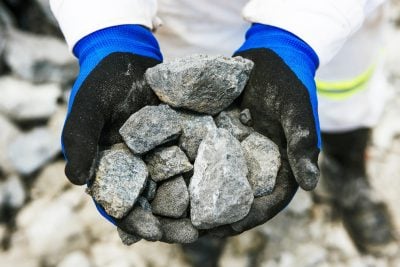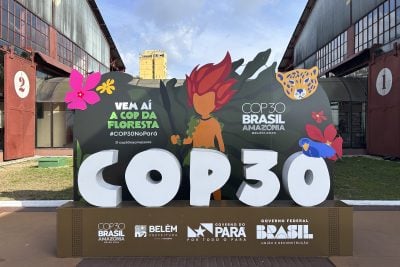The Simandou iron ore project in Guinea, the largest untapped reserve of highgrade iron ore in the world, has been decades in the making.
Subject to interminable delays owing to political instability, ownership disputes, and corruption claims, it has become a byword for failed resource exploitation.
Yet there are reasons to believe that it will finally be developed. With a logistics plan now agreed, Rio Tinto, the British-Australian mining giant involved in the project, predicts that production can begin one year earlier than previously expected.
Rio Tinto was awarded its first exploration licence on the reserves in 1997 – but the project has been held up by a web of conflicting ownership claims, two coups in Guinea, legal challenges, corruption claims and government insistence on changes to the project.
Huge reserves of ore
All this uncertainty made potential investors wary of committing what has turned out to be tens of billions of dollars to the project, despite the estimated presence of more than 2bn tons of iron ore.
The main Simandou reserves are now controlled by two separate consortia. Blocks 3 and 4 are being developed by the Simfer consortium of Rio Tinto and China’s Chalco Iron Ore Holdings (CIOH). The latter is 75% owned by the Aluminium Corporation of China (Chinalco), with Baowu Steel Group (20%), China Railway Construction Corporation (2.5%) and China Harbour Engineering Company (2.5%) holding the remaining equity. Blocks 1 and 2 are controlled by the Winning Consortium Simandou (WCS) of Winning International Group of Singapore (50%), Weiqiao Aluminium (50%) and United Mining Suppliers (nominal shareholding).
The fact that so many Chinese companies are involved underlines the fact that the lion’s share of the ore produced on the project will be shipped to China, which produces more steel than the rest of the world put together.
Logistics deal
There has also been disagreement over how to transport the ore once it has been mined. The Simandou reserves are located in the heart of the Simandou Mountains in Guinea’s Nzérékoré region, near the borders with Liberia and Côte d’Ivoire. It would therefore be logistically much easier to build a railway across the border to enable the ore to be shipped out of Buchanan in Liberia, or from a new port on the country’s coast.
Successive Guinean governments have insisted, however, that the iron ore be exported from a Guinean port, requiring the construction of a long railway with huge engineering challenges through the Simandou Mountains. This will require the construction of 235 bridges and more than 24km of tunnels, the longest of which will be 11km. Even once it was agreed that WCS and Simfer would each develop one half of Simandou, there was disagreement over who should finance, build and operate the required transport infrastructure.
WCS originally struck an agreement to build the railway and a new port at Matakong, with an assumption that it would grant access to Simfer. The Guinean government insisted in July 2022 that the two consortia jointly finance and own all rail and port infrastructure and forced them to stop work until they reached an agreement.
With little choice, the two sides eventually formed a joint logistics firm, Compagnie du Transguinéen (CTG). The railway is on track In December they agreed that WCS would build the 536km dual track main line, a 16km spur line to its mine and a wharf at Matakong to handle 60m tons per year. Simfer is to build the port itself, including an iron ore terminal, plus a 70km spur line to its mine; but all infrastructure will be owned and operated by CTG, in which Simfer and WCS each hold 42.5% equity and the Guinean government 15%.
Rio Tinto now expects to start production in October 2025, reaching 60m tons per year within just 30 months, of which it will take 27m tons per year. WCS is also targeting 60m tons per year, so combined output of 120m tons per year is due to make the railway the highest-capacity heavy-haul line in Africa.
Under the terms of the deal, other mining users and passenger services will have access to the railway – which may be being built with spare capacity in mind. The Chinese partners have not announced their financial commitments, but Rio Tinto estimates that it will invest $6.2bn in the mine, port and rail infrastructure.
The total investment across the entire four-block project could be about $25bn, making it perhaps the biggest ever single investment in African history. Simfer will account for 5% of total global seaborne iron ore supply when the project is completed. There have been some reports that CIOH’s investment had not yet been approved by the Chinese government, forcing Rio Tinto to finance all of Simfer’s initial expenditure, but Rio Tinto did not refer to this in its latest statements.
Ongoing objections
There has been continuing criticism from environmental and human rights groups. Human Rights Watch argues that the mine will threaten local communities’ access to land and water, with people also forced to relocate or lose farmland. In addition, a Reuters investigation in 2021 found that the SMB-Winning consortium, then in charge of building the railway, had no plan in place to mitigate the impact of construction on chimpanzees living in the area.
Two-thirds of all western chimpanzees – a critically endangered species – live in Guinea, some along the route of the railway. The Reuters team found that a contractor, China Railway 18th Bureau Group, had begun blasting railway shafts long before the project’s environmental and social impact assessment had been completed by government officials. The developers have promised to mitigate the negative effects of the project, but the effectiveness of mitigation plans for other mining projects is often questioned.
Rich seam
Despite objections, the 65% iron content of Simandou’s ore is attractive for steelmakers who need high-grade ore for lower emission production techniques, for example those using hydrogen in place of coking coal. Most iron ore is of a significantly lower grade. Steelmakers are likely to come under increasing pressure to reduce the emissions of what is generally a highly polluting, energy-intensive industry. Given Guinea’s recent political history, there is no guarantee of long-term political stability for the investors.
Another change of government could yet result in new demands being imposed on the developers. The country has been under military rule since 2021, when Alpha Condé, the then president, attempted to alter the constitution to allow him to stand for a third term. It has since been run by the National Committee of Reconciliation and Development interim government led by Colonel Mamady Doumbouya, but has been subject to sanctions imposed by the Economic Community of West African States since September 2022 in an effort to force a return to civilian rule. Whoever is in power stands to benefit from Simandou’s exploitation, something that could make jockeying for political power even more frantic.
Want to continue reading? Subscribe today.
You've read all your free articles for this month! Subscribe now to enjoy full access to our content.
Digital Monthly
£8.00 / month
Receive full unlimited access to our articles, opinions, podcasts and more.
Digital Yearly
£70.00 / year
Our best value offer - save £26 and gain access to all of our digital content for an entire year!
 Sign in with Google
Sign in with Google 



